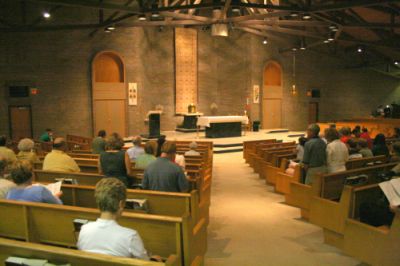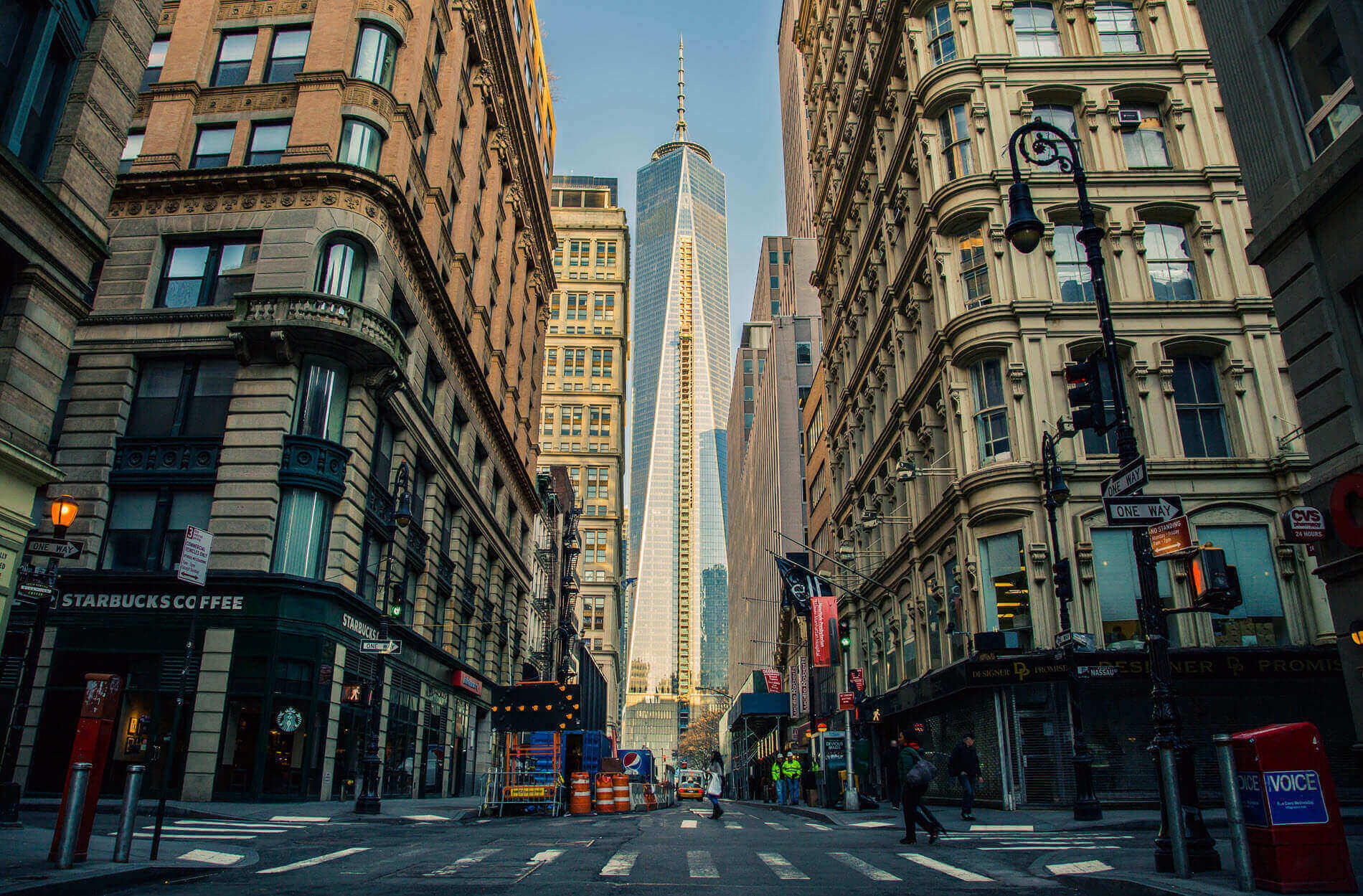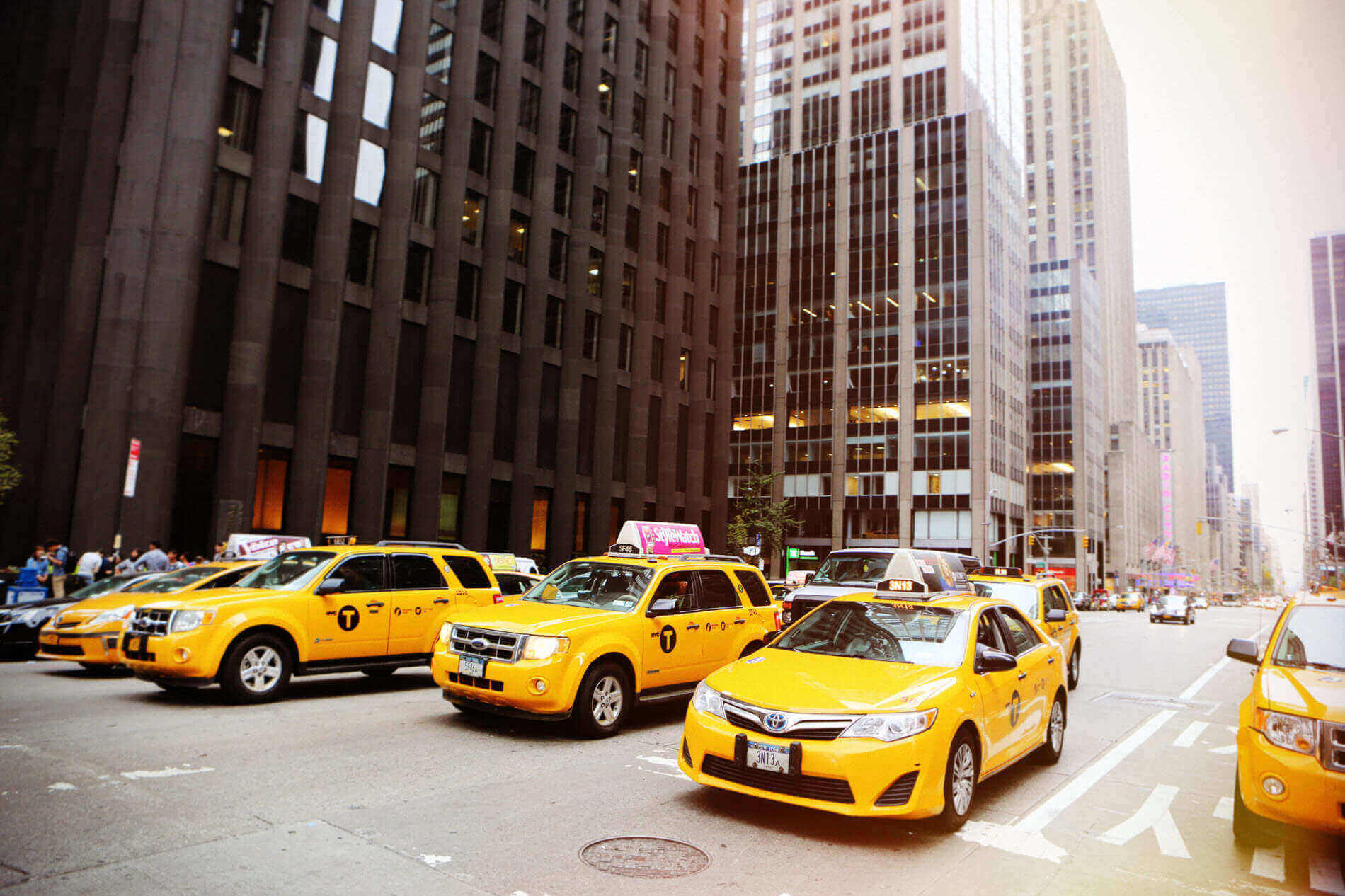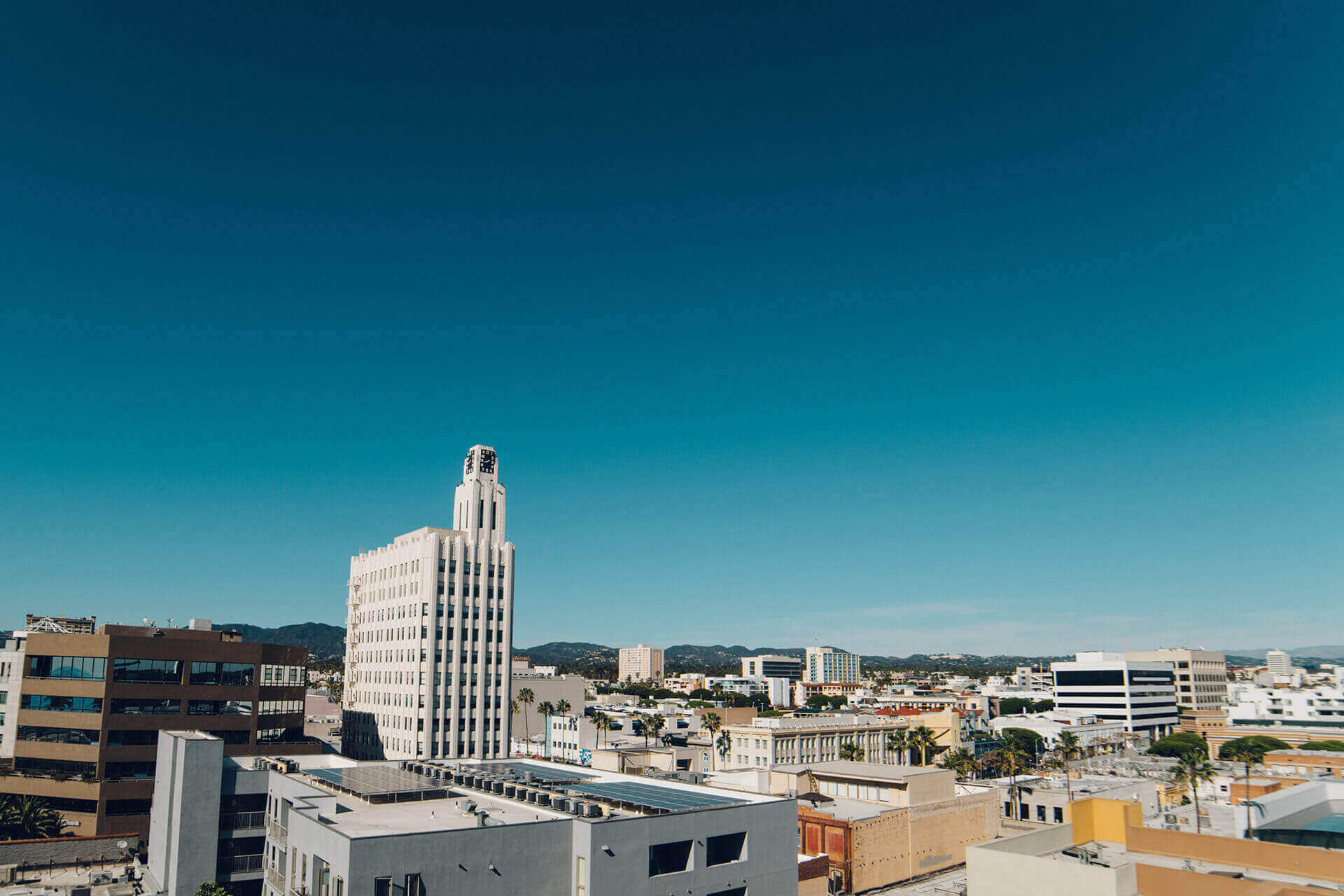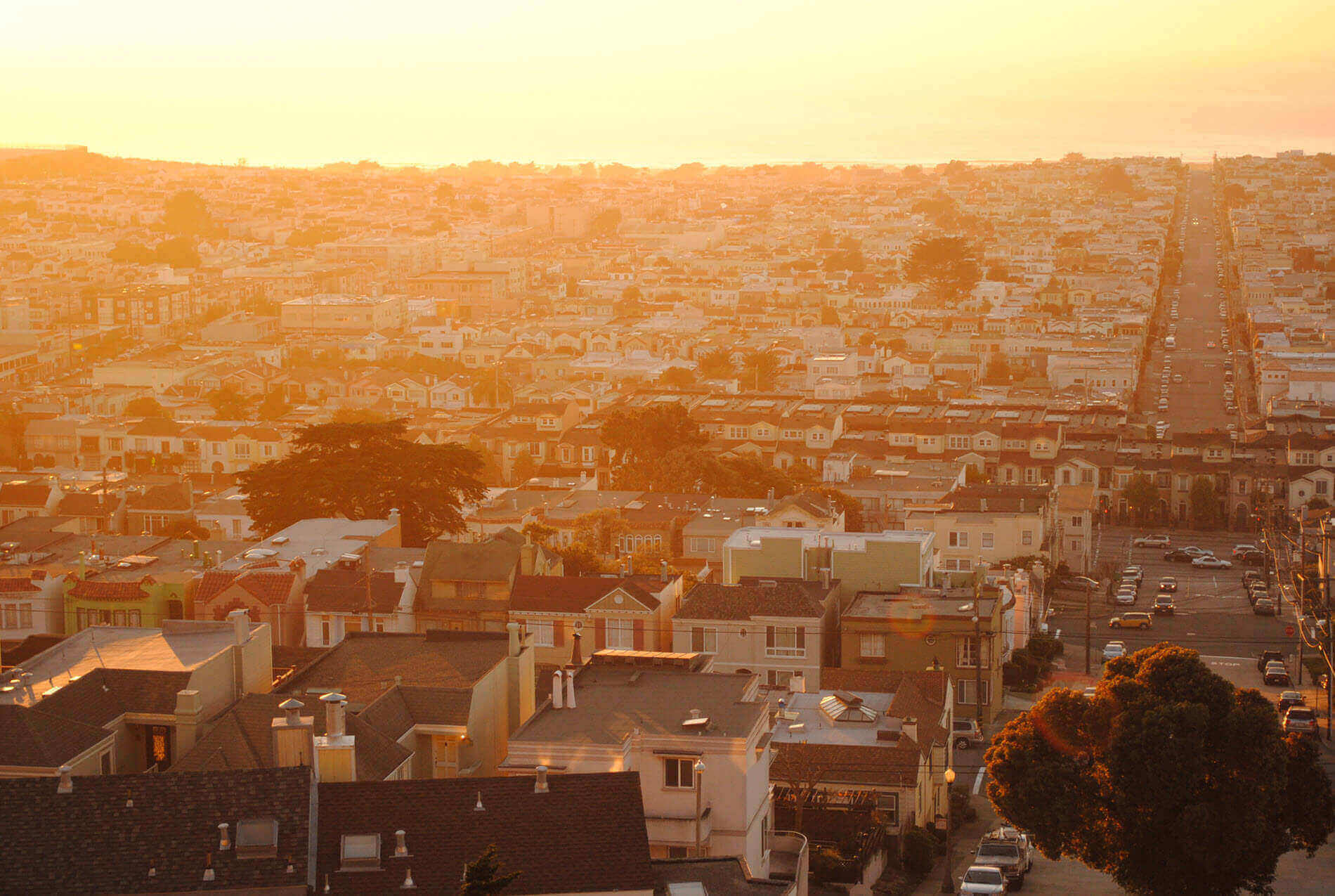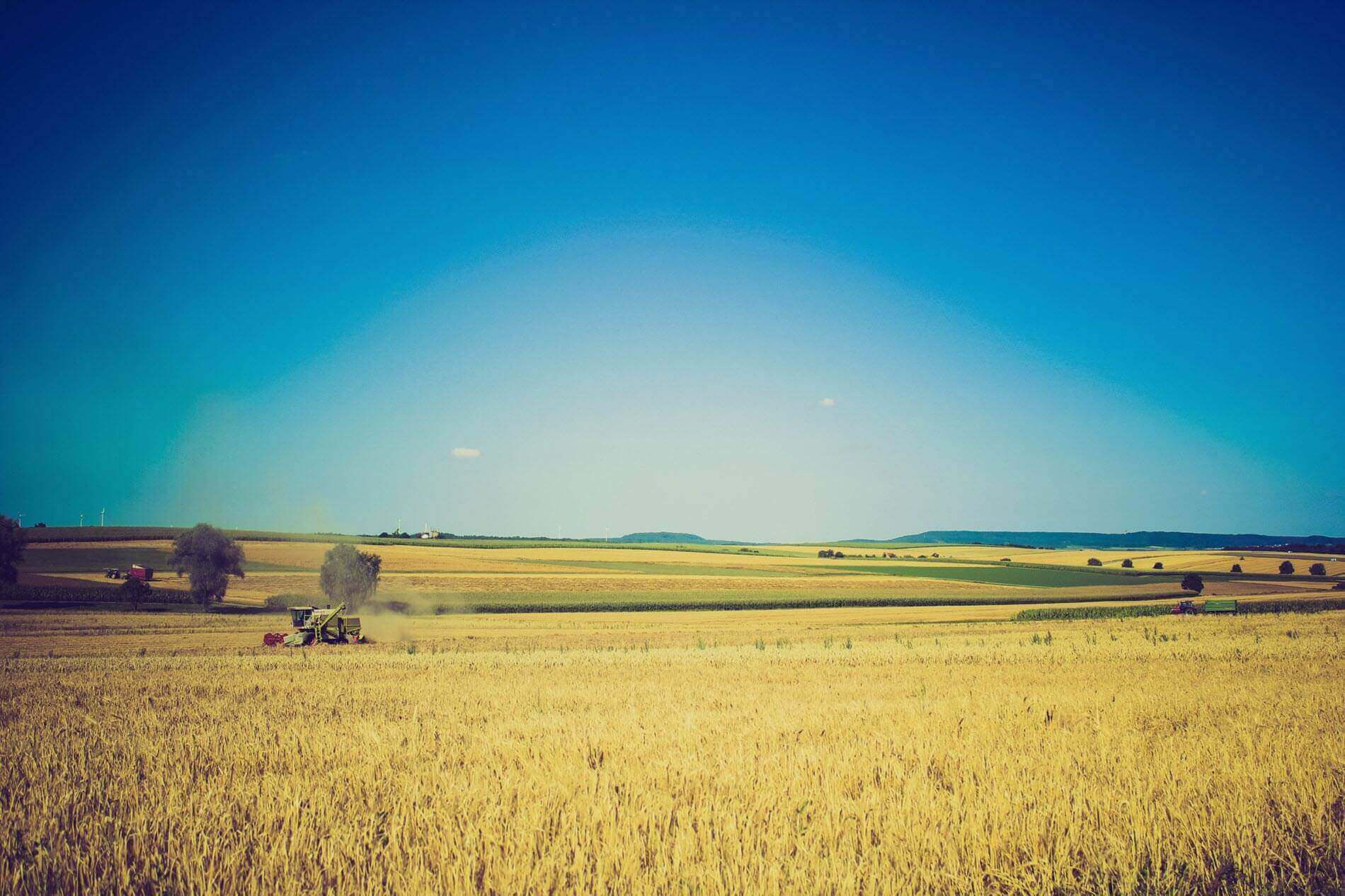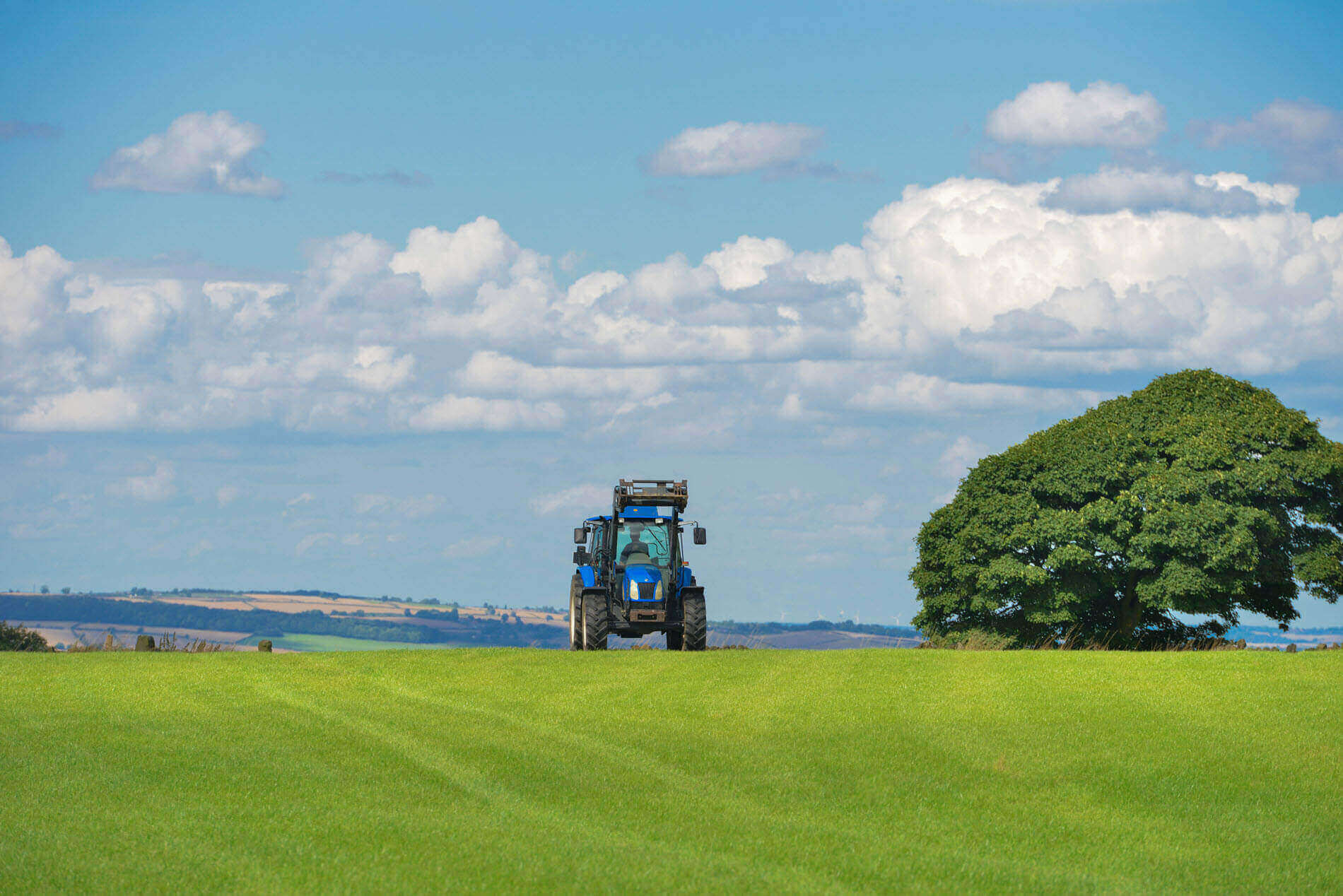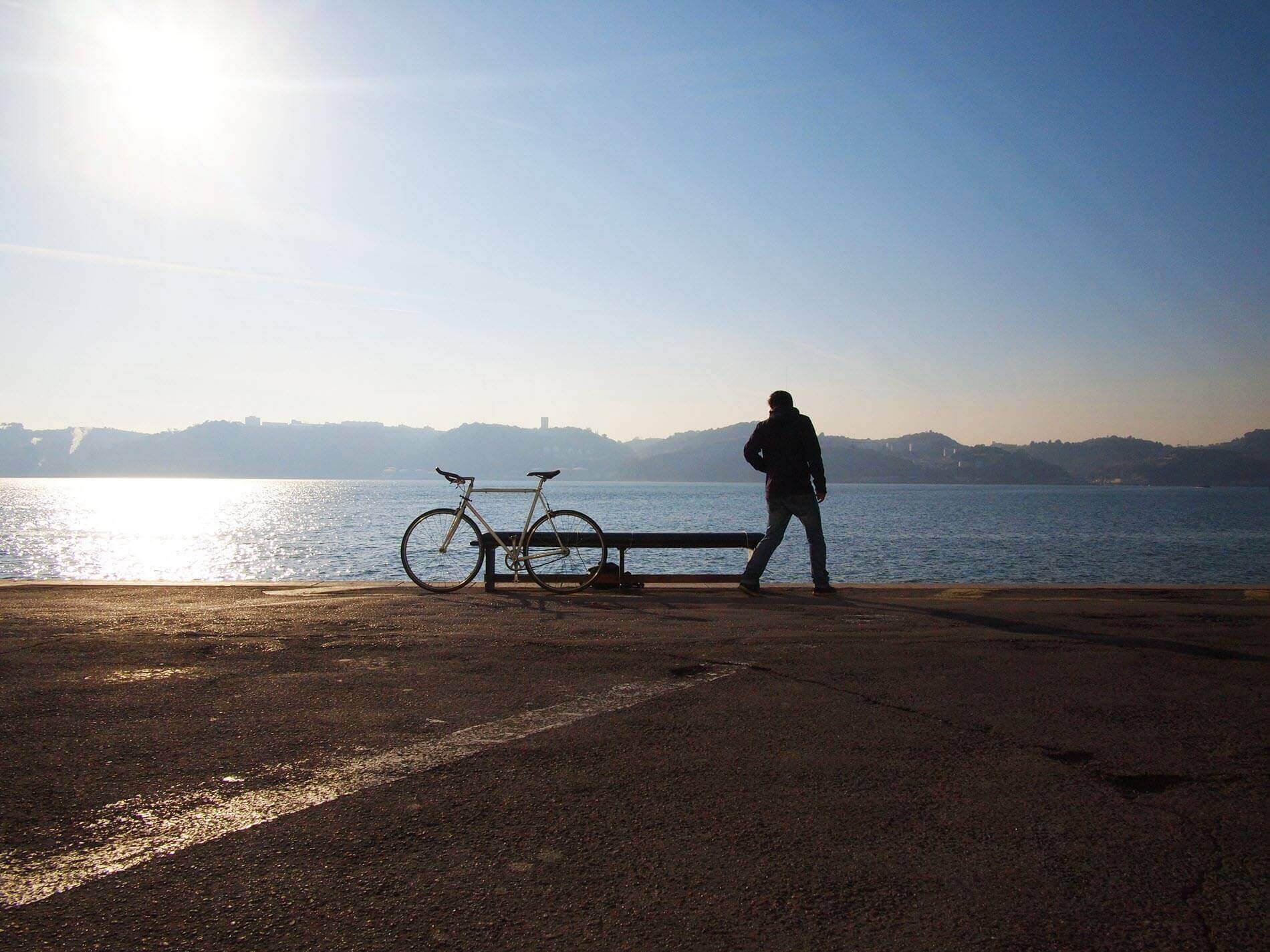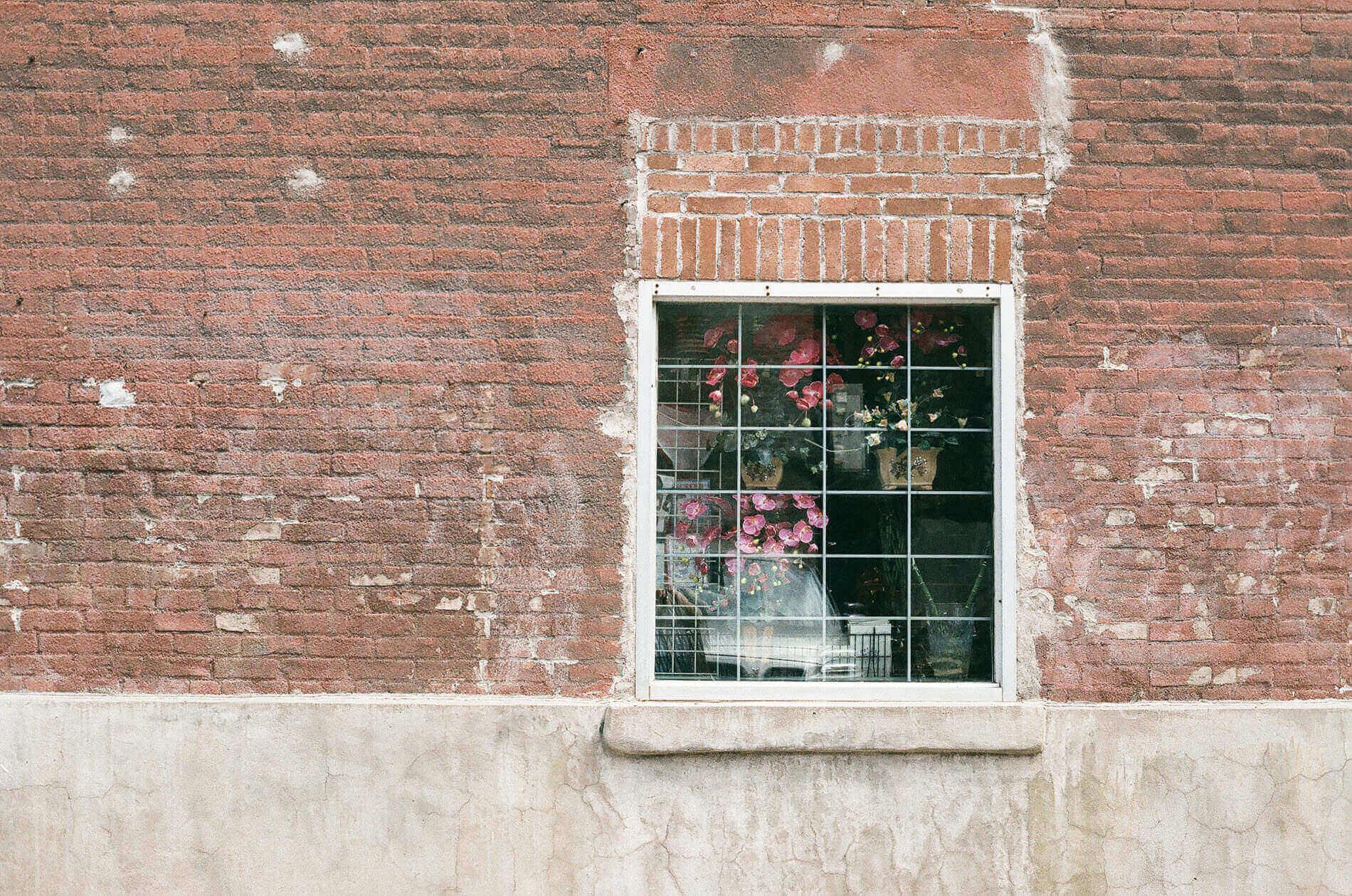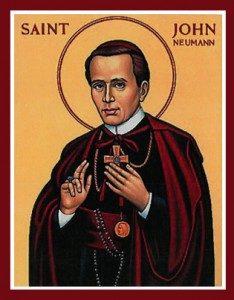 We are part of a long line of believers stretching back two centuries. That said we trace our local roots first to actions taken by Msgr. Edward Dolan, first pastor of Sacred Heart Parish. Sacred Heart Parish was the third parish formed in Knoxville. By the late 1960′s it was evident that West Knox County would experience significant growth. With great foresight, Sacred Heart Parish submitted to the Diocesan See, then located in Nashville, for permission to purchase property 16 miles west of its church. Bishop William Adrian approved, and in October 1968 a five-acre church lot within the Village Green Subdivision on Jamestowne Blvd was purchased.
We are part of a long line of believers stretching back two centuries. That said we trace our local roots first to actions taken by Msgr. Edward Dolan, first pastor of Sacred Heart Parish. Sacred Heart Parish was the third parish formed in Knoxville. By the late 1960′s it was evident that West Knox County would experience significant growth. With great foresight, Sacred Heart Parish submitted to the Diocesan See, then located in Nashville, for permission to purchase property 16 miles west of its church. Bishop William Adrian approved, and in October 1968 a five-acre church lot within the Village Green Subdivision on Jamestowne Blvd was purchased.
In 1956 Sacred Heart had started with 199 families; by 1974 it had about 850 families. In 1974 Sacred Heart Parish also retired its debt and was preparing a new ten-year plan. A proposal for a new parish in west Knox County was made. A small group of Sacred Heart parishioners met informally in homes through 1975 to promote the idea. Early in 1976 Fr. Joseph Julius (second Pastor of Sacred Heart) agreed to establishing a new parish feasibility study sub-committee under the Parish Pastoral Council (PPC). Joe Erpenbach chaired the committee. After many meetings open to the parishioners, the committee recommended about 185 families form the nucleus of the new parish. Richard Boughner demonstrated that the new parish could be financially self-supporting. The PPC approved the study recommendations and submitted them for consideration by the Diocese of Nashville. In July 1976 Bishop James Niedergeses approved the project. Joe Erpenbach was appointed chairman of the Feasibility Committee to plan the new parish. Vern Schrick was appointed to investigate real estate alternatives because the Diocese was concerned that five acres might not be adequate for the new parish’s physical needs. About eight alternate sites were studied; one was very close to where the Parish is now located. Although these sites offered more space, they were costly and were not as centrally located as the current property. As an alternative, the committee tried in November 1976 to buy the lot next door from the Presbyterians, but they rejected the offer. In a communication a year later with the Parish, Bishop Niedergeses, who apparently had lost hope of acquiring the property wrote, “Perhaps you should plant a medal of St. John Neumann on the section of the land we would hope the Presbyterians might agree to sell us.”
In December 1976, Fr. Julius agreed to report to the Bishop that with efficient use of space, the Jamestowne Blvd property would be adequate. In April 1977, with Jamestowne Blvd becoming a fait complet, the Diocese purchased for $59,500 and donated to the Parish a residence at 300 Dominion Circle in the Village Green Subdivision to serve as its rectory. It was contiguous to the church. Bishop Niedergeses appointed Fr. Sterling McGuire as first Pastor effective July 1, 1977. Fr. McGuire had been the Pastor of St. Patrick’s in Morristown, TN, and had recented celebrated his 26th Anniversary of his ordination.
The first Mass of the new parish was celebrated in the rectory on July 4, 1977. The first official meeting of the new parish was held in the Village Green clubhouse on July 13, 1977. The founding parishioners were asked to participate in the naming of the parish; the Bishop asked for three names. A month earlier, on June 19, 1977, St. John Neumann, the fourth Bishop of Philadelphia, had been canonized by Pope Paul VI. His name was our first choice, St. Francis of Assisi, and Holy Family were also suggested. On July 18,1977, the Bishop approved St. John Neumann as our patron saint and established the geographic boundaries of the parish.
Beginning soon thereafter and for almost three years, the Parish held 8:30 and 11:00 AM Sunday Mass at Farragut High School (FHS) in the miniauditorium ($30 rent per Sunday) and beginning in September 1977 conducted religious education (Kindergarten through Grade 12) in 17 classrooms ($3 for each classroom per Sunday). CCD began with 300 students and each class had two catechists team teaching. On Saturdays and weekday holy days FHS was not available. Good Samaritan Episcopal Parish at Cedar Bluff offered its church for our Parish for 6:45 PM Saturday Masses and weekday holy days. This arrangement began in November 1977, which also led to the first Sacrament of Confirmation for the Parish being celebrated May 6, 1978, in Good Samaritan Episcopal Church.
On November 3, 1977, at the rectory, a Building Committee formed. The chairperson was Mr. Pete Sothman. It had 3 subcommittees: (1) architectural selection under John Friebel, (2) parish growth under Peter Soukup, and (3) planning under David Fricke. The Building Committee surveyed the Parish and received responses from 125 of the 286 households. A nave in the shape of an amphitheatre with an educational wing interested many. Building designs like that of St. Leo the Great Parish of Houston, TX, were suggested.
On December 12, 1977, the Parish elected its first PPC, which was chaired by Joe Erpenbach. During January 1978, the PPC met and established committees to set various parish activities in motion. At that time the religious education program, choir, Catholic Youth Organization, altar committee, women’s club, and scripture study groups formed.
In fiscal year 1978 (the first official year of the Parish, which ran from July 13, 1977, to June 30, 1978), the Parish had 286 families (about 1,109 parishioners) who gave about $500 per year per household. At that time, the parish had 330 children enrolled in 17 CCD classes. Based on Metropolitan Planning Commission (MPC) projections, in 10 years the parish would have about 584 families (2,200 people) and 650 CCD students divided among 34 classes. On the Jamestowne Blvd property the Parish proposed constructing: (1) a church with a 740-seat nave and a 32-seat chapel, (2) parking for 250 cars, and (3) an adjoining facility that would hold all CCD and adult formation classes. The intent was to have all CCD and adult formation classes scheduled on Sundays, ultimately having two class sessions held concurrent with two morning Masses.
On January 29, 1978, at the Village Green Clubhouse, at a joint meeting of the PPC and the Building Committee Bishop Niedergeses was presented the building plan for the Jamestowne Blvd property. The cost for site preparation, parking area, and landscaping was estimated at about $1,500,000. Another $125,000 would be needed for furnishings. The committee estimated that design and construction would take two years (about 1 year for construction). The church was expected to be ready by Christmas Mass 1979. On July 27, 1978, following Mass at the FHS miniauditorium, a special meeting of the PPC was called to introduce the architect Armando (Al) E. Garcia of Maryville, TN, who presented draft plans for the Jamestowne Blvd building. The architect would be paid $67,000 for his services. The PPC approved the plans, which were presented to the Bishop of Nashville on July 31, 1978.
The Jamestowne Boulevard building was brick. It had two portals, East and West, by which to enter a long atrium, where parishioners could informally gather before and after Mass. The architecture was modern in design, but did incorporate Roman arched entryways to the atrium and the sanctuary as a link to Catholic architectural heritage.
 The south section of the building was the sanctuary. It had a fan shape with pews in concentric semi-circles radiating outwards from the altar. The altar was a table of travertine marble supported by glass. Behind the altar, a cross of stainless steel laminate that was back lighted was mounted on the brick wall. Above the altar skylights added natural lighting and architecturally reminded the congregation of the Ascension of Christ. The choir and organ were located in the southwestern part of the sanctuary.
The south section of the building was the sanctuary. It had a fan shape with pews in concentric semi-circles radiating outwards from the altar. The altar was a table of travertine marble supported by glass. Behind the altar, a cross of stainless steel laminate that was back lighted was mounted on the brick wall. Above the altar skylights added natural lighting and architecturally reminded the congregation of the Ascension of Christ. The choir and organ were located in the southwestern part of the sanctuary.
Also in the south section of the building were reconciliation rooms (west side) and St. Anthony Chapel (east side). The chapel was separated from the sanctuary by a clear glass wall. It served was used for small celebrations and as a cry room during weekend Masses. The chapel held statues of Mary the Mother of God, St. Joseph, and St. Anthony of Padua. The north section of the building contained church offices, library, fellowship hall (referred to as the Great Room), kitchen, religious education classrooms and storage. The Great Room was at the core of the north section. The offices and library were along an east-west corridor south of the Great Room. Class rooms were to the east and the west of the Great Room accessible by north-south corridors. These corridors (wings) connected to the atrium. The three corridors formed a U shape around the Great Room and its adjoining kitchen. These corridors had both direct access to the outside and could be reached through the atrium.
Parishioners were asked to initially pledge a total of $250,000 and the Diocese agreed to loan $1,000,000. On October 9, 1978, the PPC reviewed bids for construction. Then the proposed financial burden was presented to the whole parish and voted on before the contract was awarded. On November 6 a negotiated contract with Jim Harbin Construction Corporation of Knoxville, TN, for $1,125,000 was signed; construction began two days later. On Sunday, December 10, 1978, the cornerstone was blessed by Bishop Niedergeses who was assisted by Msgr. Dolan and Fr. McGuire. The cornerstone was set by Msgr. Dolan and Fr. McGuire in September 1979. Material cost increases, availability of materials, weather delays, and environmental issues arising from site preparation were problems affecting construction. Angered Village Green homeowners sued the Parish and its contractors regarding water run-off.. The Parish absorbed the unanticipated material, legal, and hydrologic restoration costs. When the final invoice was paid in October 1980, construction costs totaled $1,179,000. In addition, the architect’s fee was $67,000. The Diocese would ultimately loan the Parish $1,125,000.
On Fathers’ Day, June 15, 1980, the first Mass was held in the Jamestowne Boulevard church. The church was dedicated on October 3, 1980 with Bishop Niedergeses as principal celebrant and Msgr. Edward Dolan, Fr. Joseph Julius, Fr. Albert Henkel, and Fr. Sterling McGuire as concelebrants. Eventhough the church was functional and had space for the congregation, the Parish lacked funds for 28 pews (almost half of its seating capacity) and some liturgical furnishings. It would take three more years of fundraising before the church was fully furnished.
Our Parish population steadily grew. In 1980, the year that the Town of Farragut was incorporated, it had 1,560 parishioners registered; by 1986, there were 2,315 parishioners (850 families), and by the mid-1990′s the Parish had as many as 1,100 families.
Over the last three decades, the Parish has been lead by seven pastors who have been at times aided by other priests and deacons. The following tables lists the priests and deacons who had been assigned to the Parish.
| Our Pastors | |
| 1. Fr. Sterling McGuire | July 1977 – November 1981 |
| 2. Fr. Albert Seiner | November 1981 – January 1982 |
| 3. Fr. Louis Junod | January 1982 – June 1984 |
| 4. Fr. Xavier Mankel | June 1984 – August 1987 |
| 5. Fr. William Casey | August 1987 – August 1997 |
| 6. Fr. John Dowling | August 1997 – January 2010 |
| 7. Msgr. Patrick Garrity | February 2010 – June 2018 |
| 8. Fr. Joseph Reed | July 2018-present |
| Our Associate Pastors, Assisting Priests, and Priests in Residence | ||
| 1. Fr. David Perkin | Associate Pastor | March 1984 – June 1985 |
| 2. Fr. Patrick Brownell | Associate Pastor | May 1994 – June 1997 |
| 3. Fr. Ragan Schriver | Associate Pastor | August 1997 – August 1998 |
| 4. Fr. Jim Harvey | Associate Pastor | August 1998 – August 1999 |
| 5. Fr. Joe Campbell | Associate Pastor | August 1999 – August 2002 |
| 6. Fr. John Orr | Priest in Residence | August 2002 – May 2006 |
| 7. Fr. Bede Aboh | Associate Pastor | July 2005 – June 2007 |
| 8. Fr. William McNeeley | Assisting Priest | June 2007 – April 2009 |
| 9. Fr. John Appiah | Part-time Associate Pastor | June 2010 – June 2011 |
| 10. Fr. Anthony Dickerson | Associate Pastor | September 2010 – April 2011 |
| 11. Fr. Doug Owens | Associate Pastor | July 2011 – May 2013 |
| 12. Fr. Julius Abuh | Priest in Residence | December 2011 – March 2012 |
| 13. Fr. Hoan Dinh | Priest in Residence | July 2012 – April 2014 |
| 14. Fr. Christopher Riehl | Associate Pastor | September 2012 – June 2013 |
| 15. Fr. Christopher Manning | Part-time Associate Pastor | July 2013 – present |
| 16. Fr. Joseph Hammond | Priest in Residence | July 2013 – present |
| 17. Fr. Michael Maples | Associate Pastor | May 2014 – present |
| Our Deacons | |
| 1. Ray Rector | July 1978 – November 1981 |
| 2. William Murrian | February 1979 – November 1980 |
| 3. Donald Amelse | October 1989 – present |
| 4. William Diesing | October 1989 – July 2000 |
| 5. Marquis Syler | November 1994 – present |
| 6. Michael Gouge | June 2007 – present |
| 7. James Lawson | August 2014 – June 2018 |
| 8. Al Forsythe | June 2016 – present |
| 9. Mike Humphreys | June 2016 – present |
Fr. Aboh was our first Nigerian priest. On 3 April 2006, Fr. Aboh became a US citizen. Fr. McNeeley had first come to the Parish as a diaconate candidate in February 2006. He was a former Episcopalian priest preparing to join the Catholic priesthood under the pastoral provision of Pope John Paul II’s June 20, 1980, decree of the Congregation for the Doctrine of the Faith. Fr. McNeeley was ordained at Sacred Heart Cathedral on June 2, 2007, and celebrated his first Mass at our Parish on June 3, 2007.
Our first deacon, Ray Rector was assigned to St. Mary’s Parish in Oak Ridge, when he began to assist Fr. McGuire. In July 1978 Fr. Bob McHofstatter at St. Mary’s agreed to formally recognize this arrangement, which continued until April 1979 when Deacon Ray officially was assigned to the Parish. William Murrian and Michael Gouge were residing in the Parish when they were assigned.
In general the growth in the Catholic population in East Tennessee was a key factor in the creation of the Diocese of Knoxville in June 1988. The parish was transferred from a 150 year old Diocese to the newest and smallest Diocese in the United States. Bishop O’Connell (1st Bishop of Knoxville) was installed in September 8, 1988.
In 1989 Bishop O’Connell directed our parish leaders to purchase enough land for a church and a school. The Bishop wanted the Parish to build a school because the nearby St. Joseph’s and Sacred Heart Cathedral Schools were both near capacity. He also expressed interest in forming another West Knox County parish (which would in 1994 become All Saints) to accommodate the growing Catholic population.
In March 1990, the Parish increased parking at the Jamestowne Blvd property by 20 percent to accommodate its growth. At that time engineering studies determined that a desirable 11,500 sqft extension to the west classroom wing was not possible because of geologic problems. In the early 1990′s, the Parish rented space from the Town of Farragut. (The Parish had the opportunity to rent the space because the Town had vacated the buildings and moved to the newly completed Municipal Hall.) The buildings are behind the historic Avery Russell House at the corner of N. Campbell Station and Kingston Pike. In them the Parish held youth ministry activities and Wednesday night CCD.
A steering committee was formed to help guide further expansion of the Parish. In 1991, the 61-acre Duncan Farm, which was adjacent to Grisby Chapel Road, was subdivided and the Parish purchased 42 acres for $1,595,000. The tract owned by the Parish is now known as 624-645 St. John Court. The remainder of the Duncan Farm became Prestwick Place.
Between 1991 and 1995, the Parish unsuccessfully tried to sell the Jamestowne Blvd property. A strategic planning committee formed and produced a master plan for the development of the St. John Court property and a mission statement for Catholic youth education. In 1993 a capital campaign began. Pledges totaled $2,800,000. The formation of All Saints Parish in 1994 caused some attrition from our parish, but new families and additional fundraising activities raised $2,920,000. The December 28, 1995, project plan proposed building the school in two phases: the first phase would be completed by August 1997 and cost about $4,250,000; the second phase would cost an additional $900,000. Initial school enrollment was estimated at 210 students growing to a maximum enrollment of 420 students by the 2005-2006 school year. A diocesan loan funded the balance needed to pay construction costs. Construction began in the fall of 1996 after significant weather delay.
On August 3, 1997, the 40,000 sqft St. John Neumann Catholic School (SJNCS) was dedicated by Bishop O’Connell. On that same date, Fr. John Dowling became our 6th Pastor.
Sr. Mary Janice Brink was Principal of SJNCS from its opening on August 22, 1977, until May 2002. In August 2002 Dotti Morris was appointed Acting Principal. Ms. Morris was appointed Principal in February 2003 and continued until May 2009. In August 2009 Mr. Bill Derbyshire became the 3rd SJNCS principal.
SJNCS had 73 students and 11 staff for its first year (1997-1998) and had two kindergarten classes and one class each for Grades 1 through 3. The following table shows the enrollment growth of our school. The school had two classes in all grade levels by its ninth year and reached a peak enrollment of 395 students in its tenth year (2006-2007).
To include middle school classes at SJNCS required adding an 11,000 sqft academic wing at a cost of $1,500.000. The capital campaign for the wing began in December 1998 and on February 27, 2000; the new wing was opened by Bishop Joseph Kurtz (2nd Bishop of Knoxville).
In October 2004, the Parish once again raised funds for the school to make improvements to the athletic fields so that competitive soccer and football games could be hosted. Some improvements were made in the near term; all desired improvements were not completed till a decade later. Improvements included the leveling of fields, installed irrigation systems, and construction of nearby buildings for use by sports teams.
School attendance reached a plateau in 2007. In the years that followed, it became clear that the school needed to address the needs of families with preschool-age children. But by then the Parish had set in motion plans to build a new church on the St John Court property, which took priority. It was not until November 2012, when a “Kindergarten” wing was approved by Bishop Stika (3rd Bishop of Knoxville). Construction started in March 2013 and was completed in July 2014 at a total cost of $548,900. The wing was opened to students starting August 2014.
In September 1998 as SJNCS began its second year, the Parish negotiated a contract of sale for its Jamestown Blvd property. This set in motion a building need assessment. During 1999 a survey and parish ‘town’ meetings were held. Progress was slow; Parish debt by October 2000 was $5,448,500. The effort was put on hold when the purchase could not be completed by July 2001. On November 29, 2001, Bishop Kurtz directed Fr. Dowling to forego further attempts to sell the Jamestowne Blvd property and concurred with Parish plans to (1) make costly building repairs, (2) replace furnishings worn out from 23 years of use, and (3) build a new church around 2007.
The Diocesan capital campaign, “Growing in Faith Together (GiFT),” which was organized in November 2004, provided the Parish the opportunity to begin building again. In November 2005, as the two-year GiFT campaign was underway, the Parish debt was $2,558,000. Through the GiFT campaign the Parish sought to raise $3,600,000 (i.e., about $3,600 per household over three years), then borrow $6,000,000 to build a church and other buildings. Like the Jamestowne Blvd estimates, these costs did not include the contents, which would be funded through memorials. In February 2005, the expectations were that the construction would be completed in three years; with occupancy around July 2008.
On July 30, 2005, Fr. Dowling appointed a Needs Assessment Committee chaired by Tom Viotti and a Building Committee chaired by Pat O’Brien for the new church. Parish surveys found agreement over certain elements for the new church, like marble and stained glass; however, parishioners were divided in their opinion of having a modern ampitheatre or a traditional cruciform style. Fr. Dowling sided with the slim majority that desired the cruciform and gave thousands of hours toward the planning, negotiating, and meeting with people to make it a reality. Ethan Anthony of HDB/Cram and Ferguson was selected as the architect and in May 2006 produced preliminary designs for a Romanesque church seating about 900 to serve the parish, which at this time had about 1,100 families. The church design has many of the architectural elements found in the Cathedral Basilica in Saint Louis, MO, and churches in the Burgundy region of France: Amiens, Vezelay Abbey and the Abbey of Fontenay.
The St. John Court church has a massive quality to it, with thick walls, the rounded Roman arch, sturdy piers and columns, groin vaults, large bell tower, and sculpted stone work. Its irregular stone exterior is made of Texas limestone veneer and a roof of impressionist terra cotta tiles. The highest point is the cross atop its bell tower which is 106 feet above the tower base.
The floor is travertine stone from Florida. The sanctuary is faced with bottichino marble from Italy. .The green accents and facing of the nave columns are verdi alpe marble from India. The red accents and red columns are Rosa levonto marble from Italy. The cruciform floor plan provides for a 100-foot long nave that seats about 600 and transepts that each seat about 100. This design naturally draws attention to the altar and sanctuary. At the center of the crossing, the nave, transepts, and apse are joined by pendentives that are topped by an 84-foot high dome. Both of these architectural elements draw from Byzantine architecture. The mural painting was done by Stoytcho Stoykov of Conrad Schmitt Studios of New Berlin, WI.
The 55-foot high groin-vault ceiling is an architectural element distinctive to the Romanesque-style of Burgundy, France. The ribs allow the addition of the 20 clerestory windows, which provide added light and beauty to the nave. The church also has other larger stained glass windows: ten in the nave, two transept windows, eight windows around the apse, and a rose window that is dedicated to Saint John Neumann. All of these stained glass, the 24 sculpted column capitals, and other sculpted stone edifices on the exterior of the church tell the salvation story of the Old and New Testaments. The stained glass was done by Willet Hauser Studios of Philadelphia, PA, and Conrad Schmitt Studios. Sculptured stone was done by Danielle Kremar of Boston, MA.
In September the contract was negotiated with Messer Construction. Groundbreaking was celebrated by Bishop Kurtz on September 24, 2006, and four days later the final terms of the contract were agreed to and signed by all parties.
While capital investment continued, a reassessment of our Parish goals began. On February 1, 2006, the PPC chartered a strategic planning committee to provide a map for the next ten years. The committee chaired by Erica Renfree and Larry Lehmann performed a parish needs survey (130 households responded), recommended a vision and mission statement for the Parish, and recommended goals and objectives that emphasized spirituality, fellowship, and communication. The vision and mission statements were adopted by the PPC in September 2006. The strategic plan was approved in May 2007 and communicated to parishioners and Parish organizations.
In July 2007, New Light Presbyterian purchased the Jamestowne Blvd property from the Parish for $2,000,000. Beginning with the 2007-2008 school year, CCD was held at SJNCS. The administrative offices at Jamestowne Blvd were relocated on December 21, 2007. Likewise, all parish activities, except for weekend Mass and Perpetual Eucharistic Adoration, stopped using the Jamestowne Blvd facility on that date. On June 28, 2008, the Parish held its last Mass at the Jamestowne Blvd facility. For about six months weekend Masses were celebrated in the SJNCS gymnasium. On December 31, 2008, Perpetual Adoration at Jamestowne Blvd ended. Within an hour Perpetual Adoration resumed at St. John Court. The rectory at 300 Dominion Circle, which was originally purchased for $59,500 in 1977, was sold in December 2008 for $249,500. In October 2009, the Parish began collecting monies to fund the construction of a new, larger rectory that will accommodate several priests.
The first Mass, fittingly the Children’s Mass, was celebrated in the new church on December 24, 2008. By then 423 households (about 1/3 of the Parish) had pledged around $3,043,000 and had paid $2,700,000 in pledges, of which $534,000 was obligated to Diocesan ministries. In that the remaining cash for construction was over $1,400,000 short of the Parish’s February 2005 goal, construction of the parish hall and administrative offices were postponed. Instead, the church office shared a house that had heretofore been used solely by the Parish youth ministry. CCD and other parish functions were hosted at SJNCS facilities.
The St. John Court church and its contents totaled about $11,100,000. Of that total, memorial gifts were in excess of $3,000,000. All building debts outstanding, which included the balance from SJNCS and its improvements and the new church, came to $6,497,000, which are planned to be paid off in about 15 years. The church was dedicated on July 12, 2009 by Bishop Richard Stika (3rd Bishop of Knoxville). A first class relic of St. John Neumann was placed below the table of the altar.
View slide show of Dedication Ceremony
As of December 2009 the Parish had 1,019 families.
The Parish campus continued to change between 2010 and 2014. A residence that had been part of the Duncan farm and had served the Parish as a “youth house,” maintenance garage, and even as an interim parish office was leveled to make room for a new Rectory. The rectory was designed to accommodate priests assigned to the parish and visiting priests and religious. Started in June 2010 and completed a year later, the $677,035 structure has suites for five. A larger maintenance and storage building was constructed for $69,874 and completed in March 2012. By summer 2012, a Pavilion that could house Parish-wide outdoor events was under construction and completed in December 2012 for $138,773. It was outfitted over the winter and was first used by the Parish for a ‘spring fling’ fellowship event in May 2013. Since then the Pavilion is used by groups and individuals as well as for parish events, such as the annual “Homecoming”, which takes place the first weekend in October.
Construction of the new Parish Office building occurred in parallel with building the new Rectory. Construction was started in the spring of 2011 and finished in May 2012. The $466,458 building stands separate from and located between the church and the school. It has larger office spaces than had been in the Jamestown Blvd building with additional spaces for assisting priests, counselors, and ministry coordinators. Within the building is a community room, Seton Hall, which serves…along with the school… as a meeting space for parish ministries till the Parish Life Center can be built.
Between 2010 and 2016 the Parish campus added statues around the church, school, and office and in the church; improved the school’s sports complex, expanded playgrounds; expanded landscaping to include a Rosary Walk and Garden; and established a site for Parish Columbarium. Approved by Bishop Stika in November 2012, columbariums were installed in the vicinity of the Rosary Garden on June 8 and dedicated June 26, 2016. The Parish has an environment-friendly policy of encouraging the donation of living flowers/plants for celebrations, and then planting them on the campus following the celebration.
In June 2014 the Parish purchased ($454,500) a large residence, which is within the Prestwick Place subdivision and is directly across the street from the Parish campus, that became the St. Patrick’s Convent. The Convent serves the Missionary Congregation of the Evangelizing Sisters of Mary. Four of the five Sisters directly serve the Parish; one Sister works for Catholic Charities. SJN Evangelizing Sisters of Mary
Between September 2014 and February 2015, the Parish participated in the Diocesan “HOME” capital campaign and collected $1,862,260 in pledges. The campaign was timely; in June 2014 after all the previously mentioned projects had been paid for, the Parish debt was $6,731,838. The Parish still needed a Parish Life Center but it had debt that would not permit further borrowing. So the Parish Council designated that funds received through the campaign would be used: (a) to pay down the debt and (b) to set aside funds for a Parish Life Center. Because the Parish and the Diocese splits the pledge receipts and the pledged contributions are paid over the three years (2016-2019), major new construction is not near term.
As of May 2019 the Parish had approximately 1500 families.. With that in mind, we have many ministries and welcome your time, talent, and treasure.

